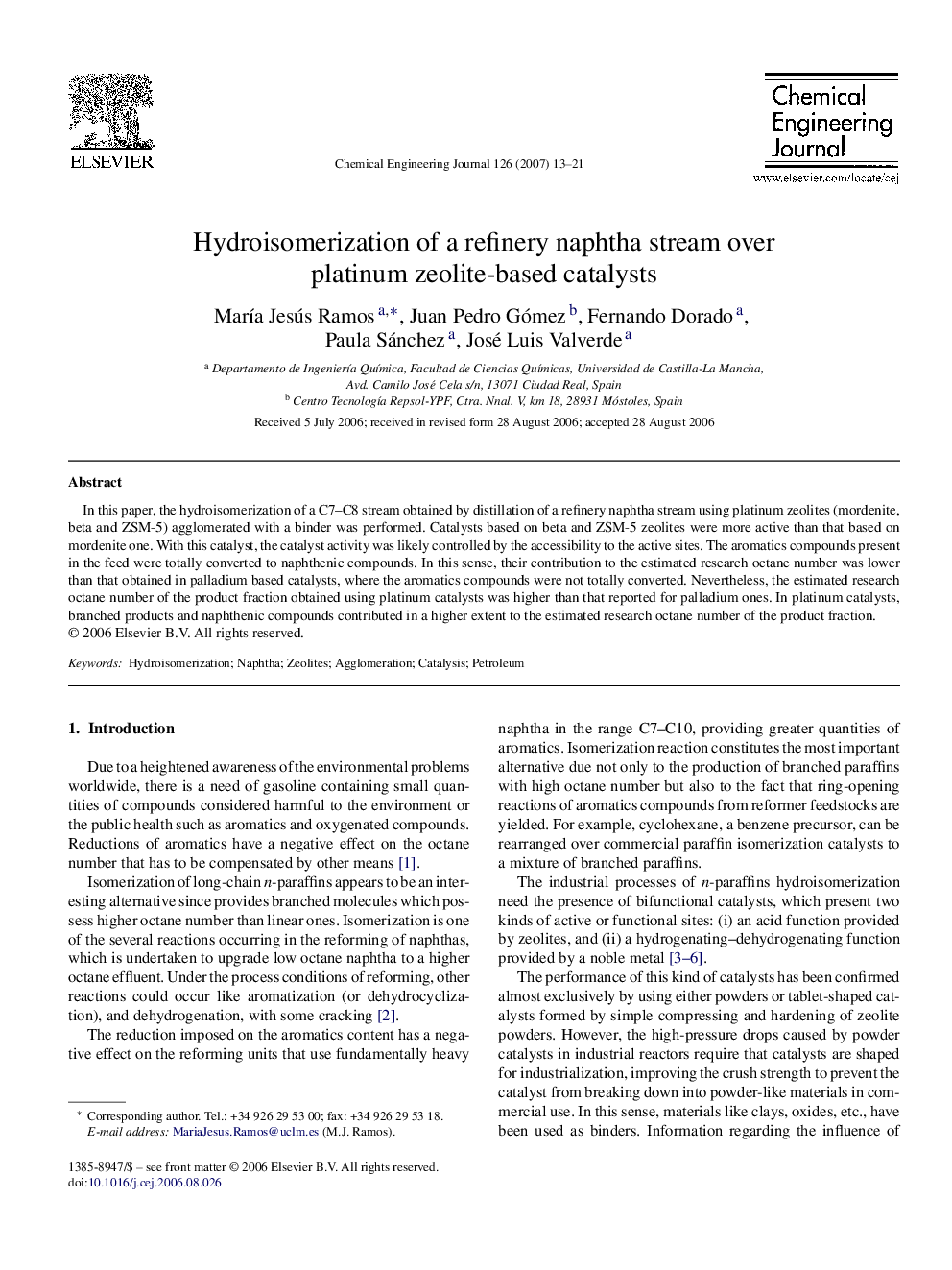| Article ID | Journal | Published Year | Pages | File Type |
|---|---|---|---|---|
| 153795 | Chemical Engineering Journal | 2007 | 9 Pages |
In this paper, the hydroisomerization of a C7–C8 stream obtained by distillation of a refinery naphtha stream using platinum zeolites (mordenite, beta and ZSM-5) agglomerated with a binder was performed. Catalysts based on beta and ZSM-5 zeolites were more active than that based on mordenite one. With this catalyst, the catalyst activity was likely controlled by the accessibility to the active sites. The aromatics compounds present in the feed were totally converted to naphthenic compounds. In this sense, their contribution to the estimated research octane number was lower than that obtained in palladium based catalysts, where the aromatics compounds were not totally converted. Nevertheless, the estimated research octane number of the product fraction obtained using platinum catalysts was higher than that reported for palladium ones. In platinum catalysts, branched products and naphthenic compounds contributed in a higher extent to the estimated research octane number of the product fraction.
